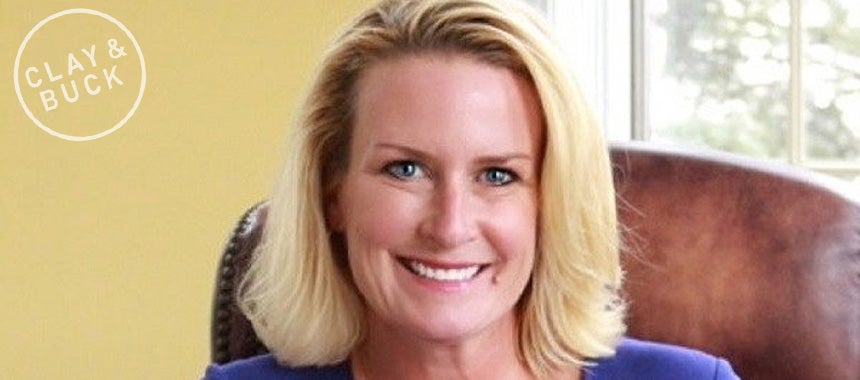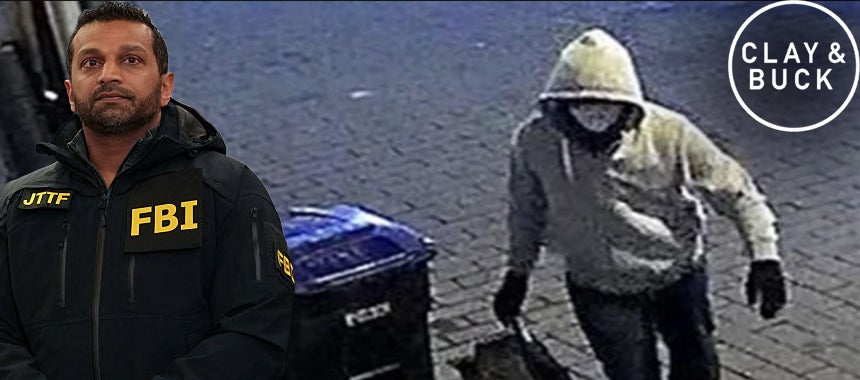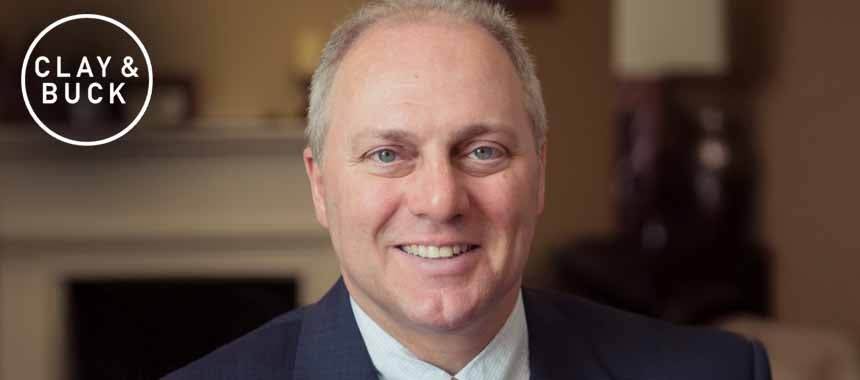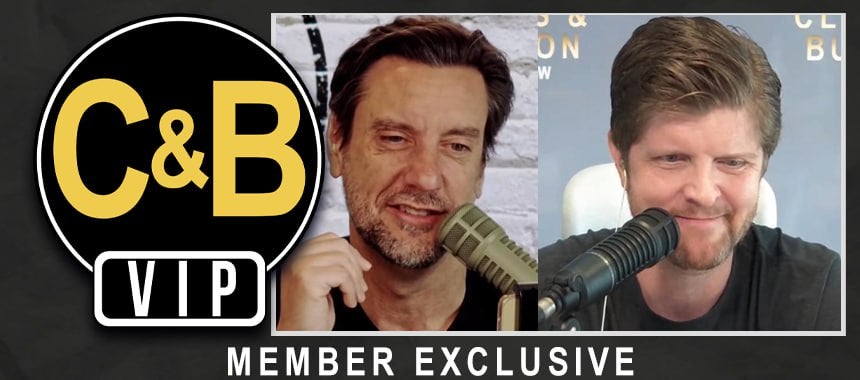Eric Adams Blames Crime on “Historical Inequalities”
13 Apr 2022
BUCK: I am a New Yorker and a subway rider. I have spent countless hours as a New York City resident on that subway. I used to commute every day. At my peak I was on it four times a day on the New York City subway. Yeah. I was a four-time-a-day rider. And when it goes badly, everybody knows that something’s wrong and the — ’cause it’s just — you know, got couple million people a day on it.
Here is Mayor Eric Adams, after this attack on the subway, putting aside the ideology of the attack and everything, just the fact the subways aren’t safe, the cameras were not working, by the way. Play clip 13.
ADAMS: We’re unclear it was the thief or the actual device itself. We are communicating with the MTA but they have been extremely collaborative in trying to find out exactly what happened. We have these cameras in the subway for a reason, to deal with attacks of this nature so we can readily identify and apprehend people, and we’re looking to find out exactly what took place here. And we will ask MTA to do an overview of all of the systems so we can identify if there are other cameras that are out.
BUCK: Clay, can we just say, he says, the cameras are specifically here to help us in this. And the cameras were broken. And, you know, the New York City subway system for years people have said there are these clocks that tell you when the trains are arriving and 99% of subway riders want them because it makes, you know, is it gonna be here in five minutes or 40 minutes? That’s a big difference to how you’re gonna schedule your day. They take forever. You know why? They don’t have funding for that.
 You know what they have funding for, generally? Pensions of city employees that are being — you know, they’re paying more for the workforce that’s already retired. A lot of union stuff going on here. Point being, Clay, they can’t even set up the cameras properly in the subway system so we have video footage of the heinous crimes that are occurring on our subway systems.
You know what they have funding for, generally? Pensions of city employees that are being — you know, they’re paying more for the workforce that’s already retired. A lot of union stuff going on here. Point being, Clay, they can’t even set up the cameras properly in the subway system so we have video footage of the heinous crimes that are occurring on our subway systems.
CLAY: It’s huge in this particular situation, too, Buck, because I would imagine not having video footage meant, one, they weren’t able to as quickly identify who the shooter was, and maybe that’s one reason that he still is at large after 24 hours of the shooting.
Also that we now don’t have direct, tangible evidence of the shooting. And that could matter in a criminal trial if perchance he’s got a decent attorney and maybe there aren’t people who are able to identify him perfectly, you want to have the video of the shooting. That’s why the cameras are there. And to have them fail, I mean, that raises so many questions to me, Buck.
First of all, the camera probably didn’t just fail today. Somebody, I guarantee you, said, “Hey, the cameras aren’t working at this subway stop.” How many days had it been? Had it been a week? Had it been a month where those cameras weren’t working? Why weren’t they fixed?
It’s a level of incompetence given the level of crime that would make me furious if I’m a New Yorker or if I’m traveling to the New York subway, as Ali our producer was texting she was doing this morning. I mean, there’s a lot of them out there that I would imagine feeling a great deal of trepidation about being on the subway given the crime rate.
BUCK: So this subway stop is not the only one where the cameras are not working, just so everyone knows. I mean, there’s no chance that this just happened to be, right? So you have a decrepit system and the subway is very problematic in New York in general. And a lot of people remember movies like Charles Bronson, Death Wish. They were making vigilant movies about New York City in the seventies and the early eighties, and one of — the visualization of how messed up New York was was the restrict eat, decrepit, graffiti riddled subway system. And when that got all cleaned up, it was the visual manifestation of Giulianiism and, you know, Ray Kelly and Bill Bratton and these guys who came and cleaned up the city. And we need to go back to that.
I mean, we actually have a template for how to fix. And I know folks listening now in Houston and Portland and Phoenix and these other cities that have had big crime spikes. I actually haven’t seen as much in the major Florida cities. I want to dig into that a little bit more. I wonder if they’ve had the same level of increase? I haven’t checked the statistics, so I want is to be clear but I want to say how Miami is doing, how Tampa is doing. But in those other cities, the same kind of logic applies.
But here’s Mayor Adams, Clay, talking about the crime rate and his version, his view of how they can deal with it.
ADAMS: We are going to be go to better. This is going to be a safe city. And we’ve been here before. 1984 when I started my policing career, this was a city that was filled with violence. So many citizens were unsafe. But we had to right energy and spirit to turn that around, and we want to do it again.
 But let’s be clear. We’re dealing with historical inequalities, historical abandonments and failures. And as I stated, there are many rivers that will continue to feed the sea of violence if we don’t dam each river. We have an over-proliferation of guns in our city and in our country. We need to stop the flow of guns, including ghost guns. That’s a real crisis that we are facing. We want to solve this problem, it’s about all of us getting on board, not those who are living in an alternate reality of what’s taking place in reality on our streets every day.
But let’s be clear. We’re dealing with historical inequalities, historical abandonments and failures. And as I stated, there are many rivers that will continue to feed the sea of violence if we don’t dam each river. We have an over-proliferation of guns in our city and in our country. We need to stop the flow of guns, including ghost guns. That’s a real crisis that we are facing. We want to solve this problem, it’s about all of us getting on board, not those who are living in an alternate reality of what’s taking place in reality on our streets every day.
BUCK: Clay, can I just say, he’s wrong. He doesn’t get it yet. And I don’t think it’s just that he says this for his base and for the Democrats and the Democrat left machinery in New York City. It’s not about historical inequality, okay. That’s just pandering. That’s nonsense.
CLAY: It’s also not accurate. Even if you want to argue inequality, 2022 is not the most historically —
BUCK: Ten years ago under the Bloomberg administration, for example, was New York — was New York so much more equal and now it’s become so much —
CLAY: No. Of course not.
BUCK: The murder rate was at an all-time low. It was super safe. Here’s the problem with New York. The conservative approach to crime, which Bloomberg, to his credit, continued. He was a Republican but not really; he’s a Democrat. He continued ’cause he knew ’cause he is smart. He’s got some bad ideas on guns, but he’s a smart guy.
It got so safe that no one even cared, Clay, to your point about it’s a luxury of low crime only, so you’re absolutely correct. And that’s how you had this buffoon de Blasio come in and things are so good and so safe that his stupid policies took a while, took a few years, took time and then the momentum went in the other direction. So the historical inequality thing, to the point you and I are both making here is just absurd. That’s just pandering.
And then on the issue of guns, There’s a sharp rise in shootings right now in New York City. There has been for over a year. The people that are shooting individuals don’t care where they get their guns, and the chance of New York City lowering the crime rate by being stricter — you already go to prison for three, four years.
CLAY: It’s almost impossible to get a gun in New York City legally, right?
BUCK: Very hard.
CLAY: — carry permit.
 BUCK: Concealed carry is basically impossible unless you’re rich and famous and important and connected. And even a premise permit is a joke.
BUCK: Concealed carry is basically impossible unless you’re rich and famous and important and connected. And even a premise permit is a joke.
For all of you out there, a lot of us live in Texas and in Oklahoma and Nebraska and even in Vermont, gotta be laughing at this, Clay, after you go through the six-month process to get a legal handgun in New York City which you can only have at your premise or taken to the one range in the five boroughs of New York City, you have to keep it in a lockbox with a trigger lock on the gun in the lockbox and in a separate lockbox keep your ammunition which is super helpful to throw at the burglary when there’s of a home invasion going on. You got two shots with your lockboxes.
CLAY: I think that’s important to mention ’cause I think a lot of people are staring at their radios like, you cannot be — that’s how difficult it is to have a legal handgun right now in New York City. So the idea that they’re going to have more regulation and it’s gonna somehow restrict violent elements from getting guns is laughably absurd. And he has to know that as a guy who was on the streets in 1984.
By the way, he has to also know that this argument of where it historical inequality rates is a total BS line because he lived in New York City when there was much higher rate of inequality and injustice than exists today. That’s just a fig leaf cover story for what is a disaster on the streets of New York City right now.
BUCK: And Democrats, whether it’s Nancy Pelosi in her San Francisco Bay, $15 million mansion or down to the mayor of New York City, Eric Adams here, Democrats who embrace these bad ideas that are then implemented through policies.
So there’s action that comes from this, the people who suffer are disproportionately black and brown residents of major cities who want to go about their lives in safety, peace, and security, go to work, pick up their kids from school, send their kids to school, without shootings happening, without being hit by a stray bullet. They don’t want their property values for the homeowners to be going down because of the increasing crime, all these issues, they make everything worse with this.
Here is the straightforward way, Clay, that you could turn around crime in New York City and every other place as I said Phoenix, Houston — Houston’s having a terrible year for crime.
CLAY: Yeah.
BUCK: It’s having a record year —
CLAY: Up 20% in murders. We were talking about that yesterday.
BUCK: You know, obviously Chicago year in and year out, there are a number of — Birmingham, Alabama, city you and I —
CLAY: Skyrocket.
 BUCK: — recently, huge crime problem there. We love our affiliate there, all of our great listeners. They got — they got some rough parts of that historical city. Here’s how you do it. Enforce the law, lock up criminals, be serious about criminal justice. That’s it. And that’s top to bottom.
BUCK: — recently, huge crime problem there. We love our affiliate there, all of our great listeners. They got — they got some rough parts of that historical city. Here’s how you do it. Enforce the law, lock up criminals, be serious about criminal justice. That’s it. And that’s top to bottom.
That’s from the mayor all the way down to the patrolman. That’s from the prosecutor’s office, the district attorney all the way down to the assistant district attorneys and their paralegals. Everybody. I want everybody in the system to know if people are hurting individuals, if they’re hurting their communities, if they’re a danger to society, we are going to take them off the street and we’re going to make an example of them.
You do that, it all changes. All this other stuff, you know, talking about community investment, violence interrupter, all this stuff, fine, but not gonna do anything. You know, I’m not opposed to it but it’s not gonna stop the problem.
CLAY: Again and I think we just gotta keep hammering it, being concerned about putting too many people in prison or in jail is a luxury of a low-crime environment. And that does not exist anywhere in the United States right now.
We gotta get back to holding criminals accountable for their misdeeds wherever you’re listening right now, DAs have to do it, we have to let police do their jobs, and I think we are swinging back in that recollection in a rapid, rapid fashion.
Recent Stories

Biden FBI’s Failures Exposed in J6 Pipe Bomb Arrest
Investigative journalist Julie Kelly points the finger straight at another Biden cover-up.

J6 Pipe Bomb Suspect Nabbed After 5 Years
Huge news, which casts yet more doubt on the honesty of the Biden administration.

America’s Travel Revolution Is Coming -- Duffy Reveals What’s Next
Transportation Secretary Sean Duffy shares a peek into the not-so-distant future of U.S. travel.

Steve Scalise on the J6 Pipe Bomber Arrest, the GOP Affordability Push and the SCORE Act
Rep. Steve Scalise of Louisiana joins C&B.

VIP Video: Venezuelan Strikes Are a Nothing Story
Democrats hopeful for a scandal are left with a big zero.





